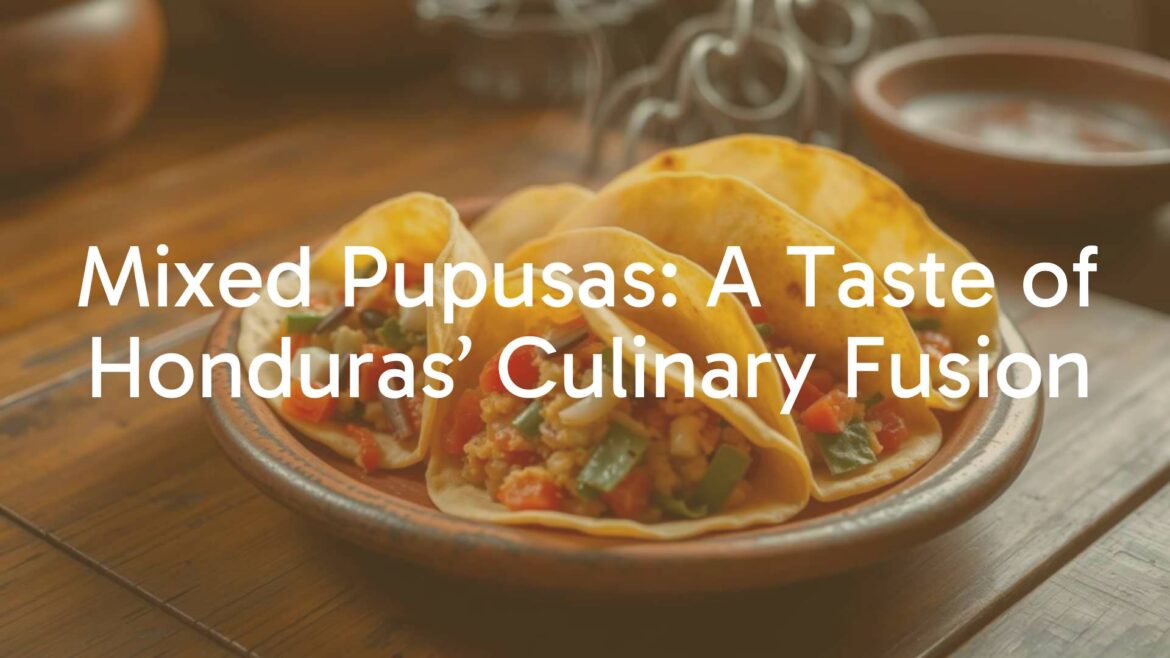The Distinct Identity of Honduran Mixed Pupusas
Among the vibrant and diverse array of Honduran cuisine, mixed pupusas stand out as a beloved staple that brings together varied flavors in a single, satisfying dish. While pupusas are closely tied to the cultural landscapes of several Central American nations, Honduras has embraced its own variations, especially the “mixtas” or mixed pupusas, which are particularly cherished for their fusion of fillings and textures.
Origins and Historical Influence
Pupusas are thought to have roots extending back to pre-Columbian times, primarily among the indigenous Lenca people of Honduras and neighboring El Salvador. Over the centuries, these stuffed corn cakes became an integral part of Honduran culinary tradition, often shared at family gatherings, markets, and local eateries. Mixed pupusas represent a modern spin on this historic dish, reflecting Hondurans’ appetite for creativity and variety in their food.
Core Ingredients and Characteristics
The allure of mixed pupusas lies in their hearty composition. The base is masa de maíz—freshly ground corn dough—molded into hand-sized discs. What sets mixed pupusas apart is the blend of fillings, often including combinations like cheese with refried red beans, seasoned chicharrón (pork), and sometimes finely chopped vegetables like loroco or squash. Each bite reveals a medley of flavors, with gooey cheese binding the other ingredients together inside a lightly crisp, pan-cooked exterior.
Regional Variations and Common Twists
Though traditional mixed pupusas generally combine cheese, beans, and pork, local variations abound. In coastal regions of Honduras, seafood such as shrimp or fish might find their way into the filling. Some areas opt for spicier mixes, using jalapeños or locally grown hot peppers, while others add herbs or indigenous vegetables to reflect seasonal abundance. Street vendors and home cooks frequently experiment, so you’ll find no two “mixtas” exactly alike.
Cultural Importance and Social Enjoyment
Mixed pupusas are more than a meal—they’re woven into the social fabric of daily life and special occasions. Often shared during communal gatherings or family events, they embody hospitality and togetherness. Making pupusas is typically a collaborative affair, with family members joining in the preparation, forming, and cooking process. They are commonly enjoyed for breakfast, lunch, or dinner and serve as a comforting reminder of home for many Hondurans living abroad.
Serving Customs and Tasting Suggestions
Mixed pupusas are traditionally served fresh off the griddle, accompanied by a tangy cabbage slaw known as “curtido” and a generous ladle of mild tomato salsa. These accoutrements balance the rich flavors with a refreshing crunch and acidity. For a complete Honduran experience, pair your pupusas with a cool glass of natural fruit juice or a traditional beverage like “horchata.” Whether enjoyed as street food or at a family table, mixed pupusas offer an inviting window into Honduras’ flavorful and communal approach to cooking and eating.


